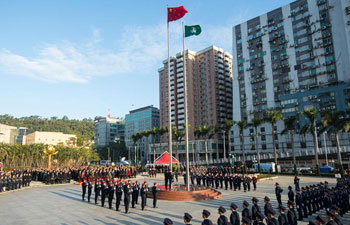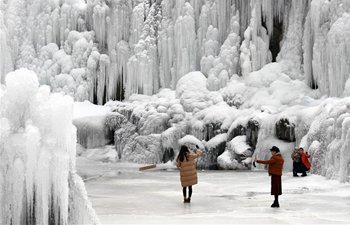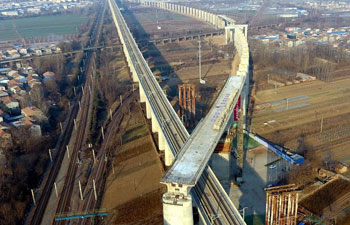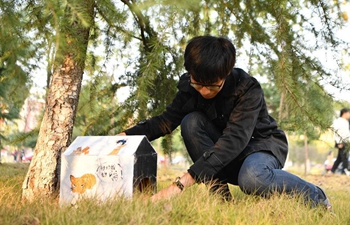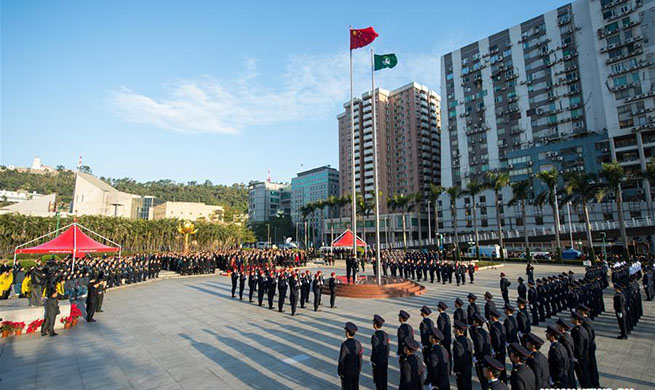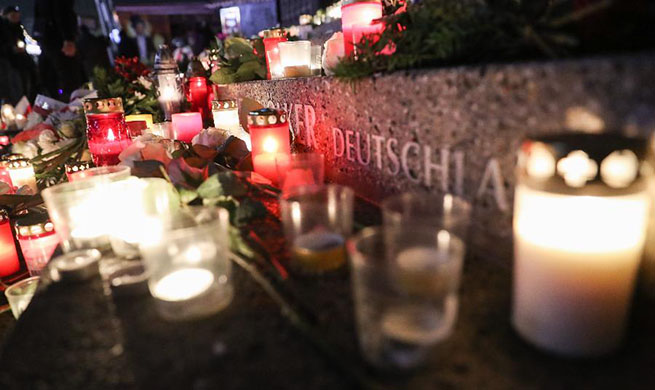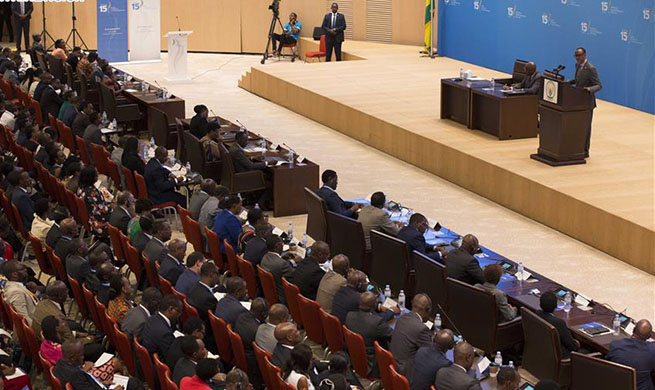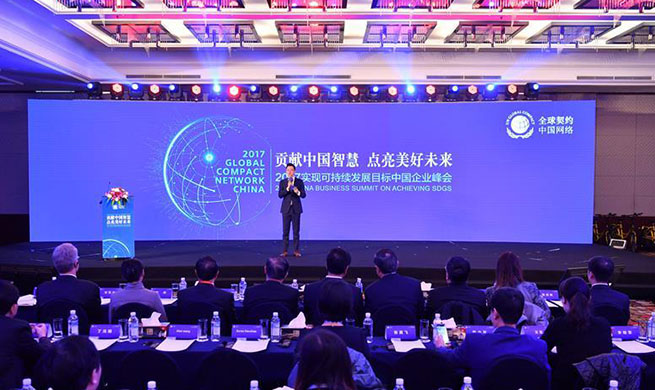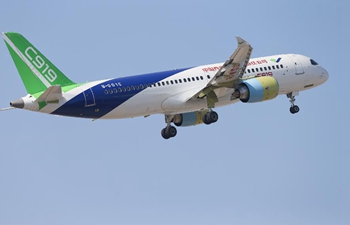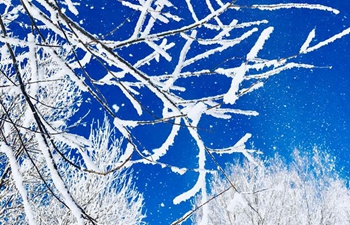PINGYAO, SHANXI, Dec. 20 (Xinhua) -- It is a cold winter's night. Outside the ancient walled city of Pingyao in northern China, hundreds of people gather to watch an unusual theatrical production.
Eight women in traditional costume towel-dry six muscular and freshly-bathed men, when suddenly the women fiercely bite into the men's arms as they howl in pain.
"If you die, the teeth marks will guide your spirits home," a narrator tells the audience.
This was how bodyguards were sent off to protect merchants in the Qing Dynasty, and the scene has been brought to life by Chinese director Wang Chaoge in her interactive play, "Another Glance at Pingyao."
The play is part of a series of theatrical performances created by domestic directors, often held at UNESCO World Heritage sites, to rediscover history and traditional culture. In many ways the show symbolizes the city's recent artistic renaissance.
The performance focuses on a cultural trope all-too-familiar to Chinese -- preserving the family bloodline. But the story, about a bank owner who threw all his wealth into rescuing an employee's kidnapped son and died with 232 bodyguards in the course, also touches on business culture and character traits the Chinese are proud of.
"I was awed by the spirit of integrity and righteousness. I saw many were moved to tears," said a viewer, in an online forum.
"[The play] epitomizes the character of Shanxi merchants," said another member of the audience, a Pingyao native. "We hold loyalty and fraternity in high esteem."
The play has been a huge success, grossing 100 million yuan (15 million U.S. dollars) in 2017 alone, with tourists travelling to Pingyao, in Shanxi Province, from far and wide to catch this unique take on Chinese history, culture and belief.
A CITY OF HISTORY
The walled city of Pingyao was built to its current form in the 14th century, and was named a world heritage by UNESCO in 1997, as "an exceptionally well-preserved example of traditional Han Chinese city."
The city put itself on the map in the 19th century as China's financial center. Banks flourished as Shanxi merchants expanded their businesses across the country.
"In its heyday, Pingyao hosted 22 bank centers and controlled nearly half of the money in the country," said Gao Chunping, a researcher with Shanxi Academy of Social Sciences.
Today tourists come in great numbers to the bank museum -- an imposing courtyard which houses the remnant of China's first draft bank, Rishengchang, which was set up in 1823.
"People often marveled how the banking forefathers created ultra-safe pin codes playing with Chinese characters," said Gao Xianhui, a local tour guide. "It was a time we rarely use Arabic numerals. And yet there was very few cases of pin theft fraud."
But Pingyao's golden days did not last. In the early 20th century, the banks collapsed one after the other, as the Qing imperial government fell and an influx of foreign banks came in equipped with better technology.
The city became soon an economic backwater, and until a few years ago, visitors struggled to find ATMs in this former banking hub.
But now the city is in the ascendancy once more, littered with souvenir shops, restaurants, museums and theatrical performances like Wang Chaoge's.
A new genre of business has risen in the city, which teems with studios teaching centuries-old folk art, such as woodcut prints, paper-cutting, Peking opera masks and earthenware.
Hou Quanying, 68, a paper-cutting master, said that even foreigners frequented her studio, and they loved the artwork pasted onto windows during festive occasions.
Deputy county government head Liu Guangming has said that "culture is the soul of Pingyao." Today that sounds more true than ever.
"This ancient city can only be brought to life if administrators give its rich history and traditional culture full play," he said.
Cities rise, fall, and rise again, whether it is in commerce, the arts or culture. And Pingyao is no different.
On top of its annual film and photography festivals, and lavish Chinese New Year celebrations, the government plans to further play up the cultural card next year by introducing an international sculpture festival with European partners.
Liu said the festival would also highlight the Shuanglin temple, which houses some of the country's finest examples of colored Buddhist sculptures dating to back to the 12th century.
"Preserving history is the future for us," said Liu, reading the slogan on display at the entrance of the government building.




